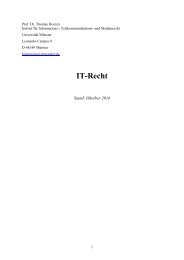3d4yVkKMl
3d4yVkKMl
3d4yVkKMl
Create successful ePaper yourself
Turn your PDF publications into a flip-book with our unique Google optimized e-Paper software.
- 63 -<br />
215. Australia draws two conclusions from the absence of any specified termination date in<br />
JARPA II. First, Australia contends that this demonstrates that the design of JARPA II is geared<br />
towards the perpetuation of whaling by any means until the commercial whaling moratorium is<br />
lifted. Secondly, Australia maintains that the open-ended nature of JARPA II precludes a<br />
meaningful assessment of whether it has achieved its research objectives, distorts the process of<br />
sample size selection, and therefore renders the design of JARPA II unscientific.<br />
216. The Court notes the open-ended time frame of JARPA II and observes that with regard<br />
to a programme for purposes of scientific research, as Annex P indicates, a “time frame with<br />
intermediary targets” would have been more appropriate.<br />
(ii) Scientific output of JARPA II to date<br />
217. Japan maintains that, prior to the periodic review of JARPA II, no meaningful<br />
evaluation of JARPA II’s scientific output can be made. Japan does assert, however, that the<br />
Scientific Committee has recognized the value of data derived from JARPA II, including genetic<br />
data and age data derived from lethal whaling. In addition, the expert called by Japan, Mr. Walløe,<br />
testified that in his view JARPA II has already provided valuable information relating to the RMP<br />
and the Antarctic ecosystem.<br />
218. Australia acknowledges that JARPA II has produced some results in the form of data<br />
that has been considered by the Scientific Committee. The Parties disagree about this output,<br />
however, in the sense that Australia argues that the data obtained from lethal sampling and<br />
provided to the Scientific Committee has not proven useful or contributed “significant knowledge”<br />
relating to the conservation and management of whales.<br />
219. The Court notes that the Research Plan uses a six-year period to obtain statistically<br />
useful information for minke whales and a 12-year period for the other two species, and that it can<br />
be expected that the main scientific output of JARPA II would follow these periods. It nevertheless<br />
observes that the first research phase of JARPA II (2005-2006 to 2010-2011) has already been<br />
completed (see paragraph 119 above), but that Japan points to only two peer-reviewed papers that<br />
have resulted from JARPA II to date. These papers do not relate to the JARPA II objectives and<br />
rely on data collected from respectively seven and two minke whales caught during the JARPA II<br />
feasibility study. While Japan also refers to three presentations made at scientific symposia and to<br />
eight papers it has submitted to the Scientific Committee, six of the latter are JARPA II cruise<br />
reports, one of the two remaining papers is an evaluation of the JARPA II feasibility study and the<br />
other relates to the programme’s non-lethal photo identification of blue whales. In light of the fact<br />
that JARPA II has been going on since 2005 and has involved the killing of about 3,600 minke<br />
whales, the scientific output to date appears limited.



